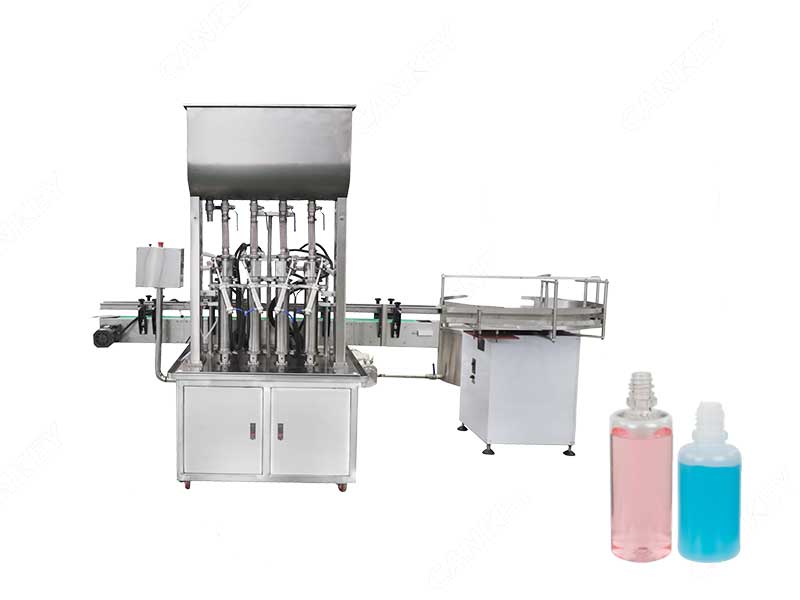Liquid filling machines are widely used in many industries, including food and beverage, pharmaceutical, cosmetic, and chemical. These machines are designed to accurately and efficiently fill containers with liquid products. The working principle of a liquid filling machine is relatively simple, but the design and construction can vary depending on the specific application and product being filled.
The basic components of a liquid filling machine include a container to hold the liquid, a filling nozzle, a control system, and a conveyor system. The container can be a bottle, jar, or any other type of vessel. The filling nozzle is the component that delivers the liquid to the container. The control system regulates the filling process, while the conveyor system moves the containers through the machine.
The working principle of a liquid filling machine involves several stages.
The first stage is the filling process. The liquid is stored in a tank, and a pump is used to transfer the liquid to the filling nozzle. The pump can be a piston pump, peristaltic pump, gear pump, or any other type of pump that is suitable for the specific application. The filling nozzle is designed to deliver the liquid to the container in a controlled and precise manner.
The second stage is the bottle handling process. The containers are fed into the machine through the conveyor system, and they are positioned under the filling nozzle. The filling nozzle is then lowered into the container, and the liquid is dispensed. The filling nozzle is then raised, and the container is moved along the conveyor system to the next stage of the process.
The third stage is the sealing process. Once the containers are filled, they need to be sealed to prevent the liquid from leaking out. The sealing process can be accomplished using a variety of methods, including capping, crimping, or heat sealing.
The fourth stage is the labeling process. Once the containers are filled and sealed, they can be labeled with product information, barcodes, or other identifying information. This process can be accomplished using a labeling machine or by manual application.
Liquid filling machines can be designed to fill a wide range of liquid products, including water, juice, milk, oil, shampoo, and many others. The design and construction of the machine can vary depending on the specific requirements of the product being filled. For example, some liquids may be corrosive or abrasive, which requires the use of specialized materials and components.
Liquid filling machines are essential tools for many industries that require accurate and efficient filling of liquid products into containers. The design and construction of the machine can vary depending on the specific requirements of the product being filled, but the basic components and principles remain the same.


